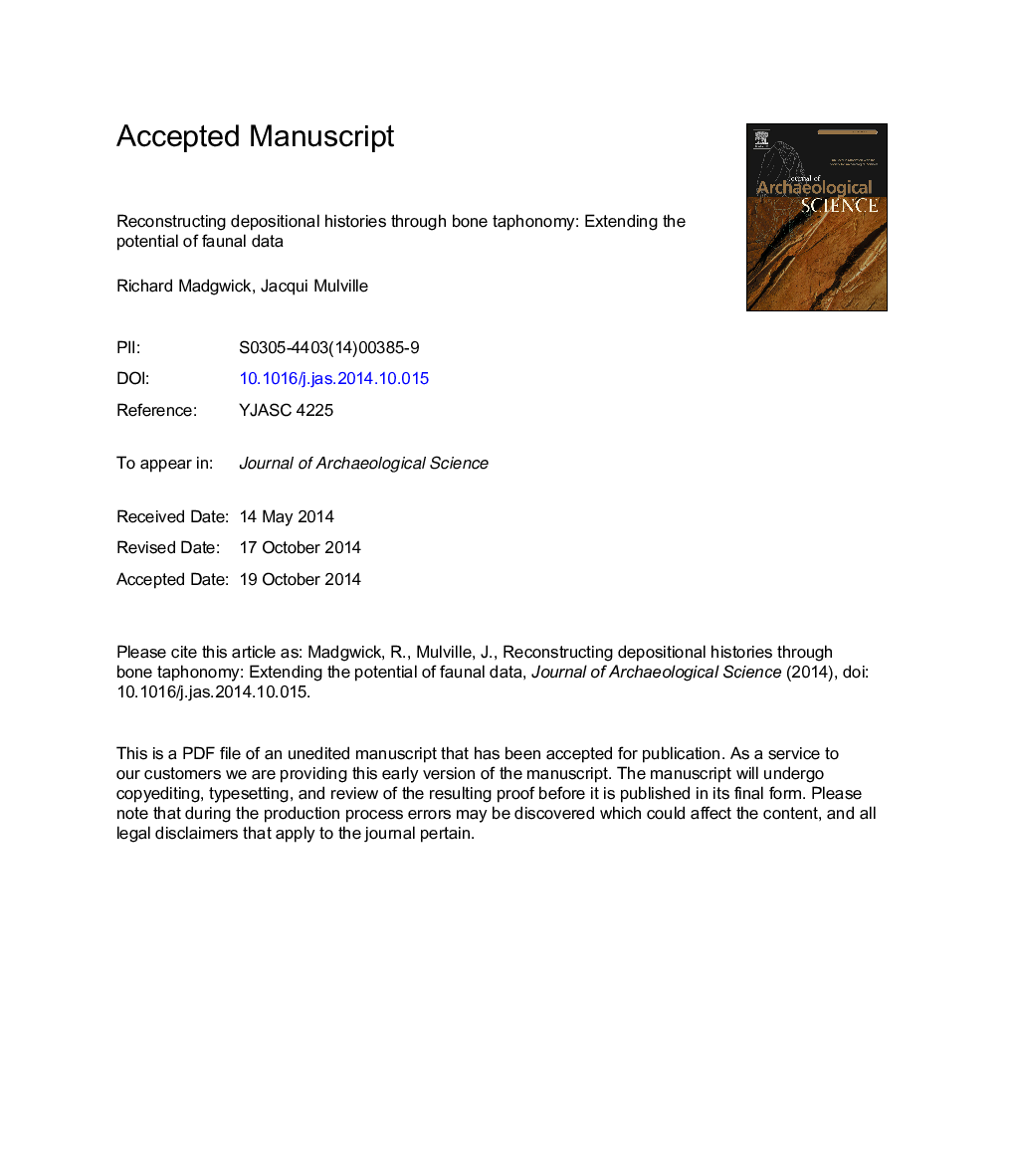| Article ID | Journal | Published Year | Pages | File Type |
|---|---|---|---|---|
| 7442541 | Journal of Archaeological Science | 2015 | 34 Pages |
Abstract
This paper explores the potential of a new approach to the analysis of bone taphonomic data for the purposes of deciphering depositional histories when stratigraphy is unobservable. Integral to this method is rigorous statistical analysis of modification data combined with an assessment of the taxonomic and anatomical composition of deposits, in terms of their susceptibility to modification. This facilitates more confident interpretation of modification patterns, as deposit composition can be discounted from responsibility for significant differences. The approach is tested on a sample area of the later prehistoric midden of Potterne, Wiltshire, UK. Through detailed recording and statistical analysis of bone modifications (weathering, gnawing and trampling), this research demonstrates that bone taphonomy is not only useful for identifying distinct depositional events in apparently homogeneous strata, but can also provide detail on the nature of processes responsible for the formation of the deposit.
Related Topics
Physical Sciences and Engineering
Materials Science
Materials Science (General)
Authors
Richard Madgwick, Jacqui Mulville,
